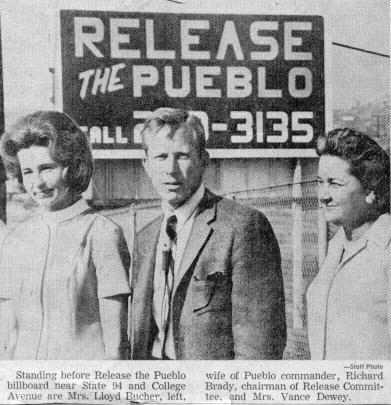
Workbook or Ebook
You don’t have to be a miracle-worker to be the 10% of applicants accepted to a military academy, but you do need a plan. For the thousands of students who apply every year–and slog through the numbing concatenation of decisions preceding a nomination–there is no greater discouragement than the likely event that they will fail. This, though, is the Board’s peek into an applicant’s moral fiber and an important ingredient to the go/no go decision. In the words of James Stockdale, USNA ’46 and Medal of Honor Winner: “The test of character is not ‘hanging in there’ when you expect a light at the end of the tunnel, but performance of duty and persistence of example when you know that no light is coming.” This is the true story of Maggie Schmidt, an All-American kid who dreamt of attending the Naval Academy when her research into the typical Midshipman uncovered a profile alarmingly like herself. This book describes her background and academic interests, her focus, as well as her struggle to put together a winning admissions package. Along the way, you gain insight into the moral fiber that grounds everything she does and the decisions she must make that some consider impossible for an adolescent, but are achievable for thousands of like-minded teens. This workbook walks you through the long process, provides check lists of everything required, decision making matrices, goal-setting exercises to determine if USNA is a good fit for you, and a mix of motivation and academic advice to balance a decision that rightfully might be the biggest one most teens have ever made.
Available at:
![]()
Excerpt:
What are the three most intimidating failures of your life? Taking your driving test? Scoring the winning goal—for the other team? Or, have you failed over and over again, and still believed success lives just ahead, just out of reach but waiting for you?
For the thousands of students who apply every year for one of the four military academies, slogging through the numbing concatenation of decisions preceding a nomination, there is no greater intimidation than the statistically likely event that they will apply and fail. That’s an examination into the pithiness of moral fiber important to the USNA, and eulogized by James Stockdale, USNA ’46 and Medal of Honor Winner:
“The test of character is not ‘hanging in there’ when you expect a light at the end of the tunnel, but performance of duty and persistence of example when you know that no light is coming.”
For those just beginning the process of applying to the United States Naval Academy, propelled into harms way by the fervor to serve your country and blend your life into “the military family”, the desire for an engineer’s blueprint to articulate the steps, or a mathematical formula that quantifies the process is overwhelming. Anything that will increase those unlikely odds.
Luckily, the tunnel you wander down pursuing your dream not only has a light, but footprints to follow. You stumble forward toward the murky pin-prick bobbing up ahead, far down the dark passageway. Its barely there, only just showing through the dimness called ‘growing up’ and the back-light of contradictions between where you are and where you want to be. But, the closer you step toward it, the sharper and clearer the image. And the clarity reveals the detail like the layers of a digital picture until, finally, you can make out that goal just past senior year.
This true story is for you.
The United States Naval Academy provides one of the most prestigious educations available. The caliber of classes, professors, and your fellow students are unmatched anywhere in the country. But it comes with strings attached. You must use that top-notch training in the service of your country for at least five years following graduation, defending our shores and values from enemies, whether the aggressive military type, computer hackers, or benign fellows wearing the face of a neighbor.
Every year, over 56,000 students—and 112,000 parents—apply to a military academy, in excess of 14,000 to the United States Naval Academy. How does a normal kid, with a good GPA, a well-rounded life, and a passion to serve his country overcome the mystique of the Naval Academy? The first thought when adults hear ‘USNA’ and ‘college acceptance’ in the same sentence is ‘Wow, you must be smart!’ To all but about 1200 lucky appointees, candidacy resembles Fermat’s Theorem—impossible unless you’re a precocious genius (like Andrew Wiles). The application process puts the chaos in Chaos Theory.
Surprisingly, there are no classes in “How to Crack the United States Naval Academy Application” and no books chronicle an effective effort. Surprising, because a methodical, well-organized series of steps taken in a systematic order will get you there. It may feel like climbing Herndon at the end of Plebe year, but it works.
This is the true story of how one All-American kid—like those many that apply—did it. She had no idea she could aim so high and succeed so succinctly. She began by tagging along after her brother’s USNA dream and found herself intrigued by the quality of education, depth of opportunity, and eminence of applicants selected for admittance. Her research into the typical Midshipman uncovered a profile alarmingly like herself. If she dreamt of attending a college where she fit in and attracted kindred souls, this qualified.
She took that first step, signing the attendance roster at a local Academy Night, with ninety-seven other students. And with a clear-eyed faith in herself, she began the Academy Application Experience. I’ve catalogued those steps from her first nascent thought through the unreal days of Summer Seminar. I’ve crystallized when the dream became an obsession—something she knew she had to try or never forgive herself—and most important, how she translated vision to reality.
And I’ve revealed her strategy to success. Exactly the same as the great Olympian, Carmen Boyle, described the strategy behind Luge:
“Lie flat and try not to die.”
Maggie Schmidt, the heroine, is Everygirl. Like your neighbor or your daughter’s best friend. The story’s drama lies in her conversion to a successful candidate. The reader is left with the feeling, If Maggie can do it, so can (I)/(my daughter).
When you first meet Maggie, you may wonder, why does she think an Ivy League school will accept her? She doesn’t earn straight A’s or play quarterback on the football team—or center on the volleyball squad. I describe in detail her background, her academic interests, her focus, as well as her struggle to put together a winning admissions package. Along the way, you gain insight into the moral fiber that grounds everything she does and allows her to fight the good fight. The support from family and friends, and decisions she must make that superficially appear impossible for an adolescent, but are in fact achievable for thousands of like-minded teens.
This is a true story. The only changes I’ve made are Maggie’s name and those of friends and acquaintances.
More of a preview?
…or go to Amazon.com’s Look Inside feature.




























